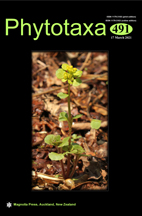Abstract
Phenotypic plasticity in the cyanobacteria provides adaptive strategies to cope with changes in prevailing environmental conditions. Plasticity may manifest in morphological, physiological, or behavioural responses. Determining if variable phenotypes are truly novel expressions evolved via adaptive genetic change, rather than intrinsic characteristics within the spectrum of intraspecific diversity has rarely been studied. Poorly characterised or unrecognised intraspecific variability is as problematic as cryptic diversity in terms of imposing limitations on the use of morphology-based identifications to recognise algal diversity. We isolated strains from a population of filamentous cyanobacteria from the plankton of a temperate lake in Western Victoria, Australia putatively identified as the cylindrospermopsin producer Chrysosporum ovalisporum which displayed aberrant vegetative and apical cells and akinete morphology, and T-type true branching. In culture, strains grown in phosphorus-free media showed morphology and true branching consistent with the wild types suggesting that these features are a phenotypic response to P-limitation. Results of the phylogenetic analyses of these strains using the 16S-23S rRNA, and the secondary structure of the ITS region of the 16S-23S rRNA operon confirmed that the isolated strains were a novel species, here designated Dolichospermum brachiatum. This is the first record of true branching in the genus Dolichospermum and only the second observation from the Aphanizomenonaceae. These findings support our current understanding that true branching in cyanobacteria is a polyphyletic trait, having arisen several times in the evolution of this Phylum.

